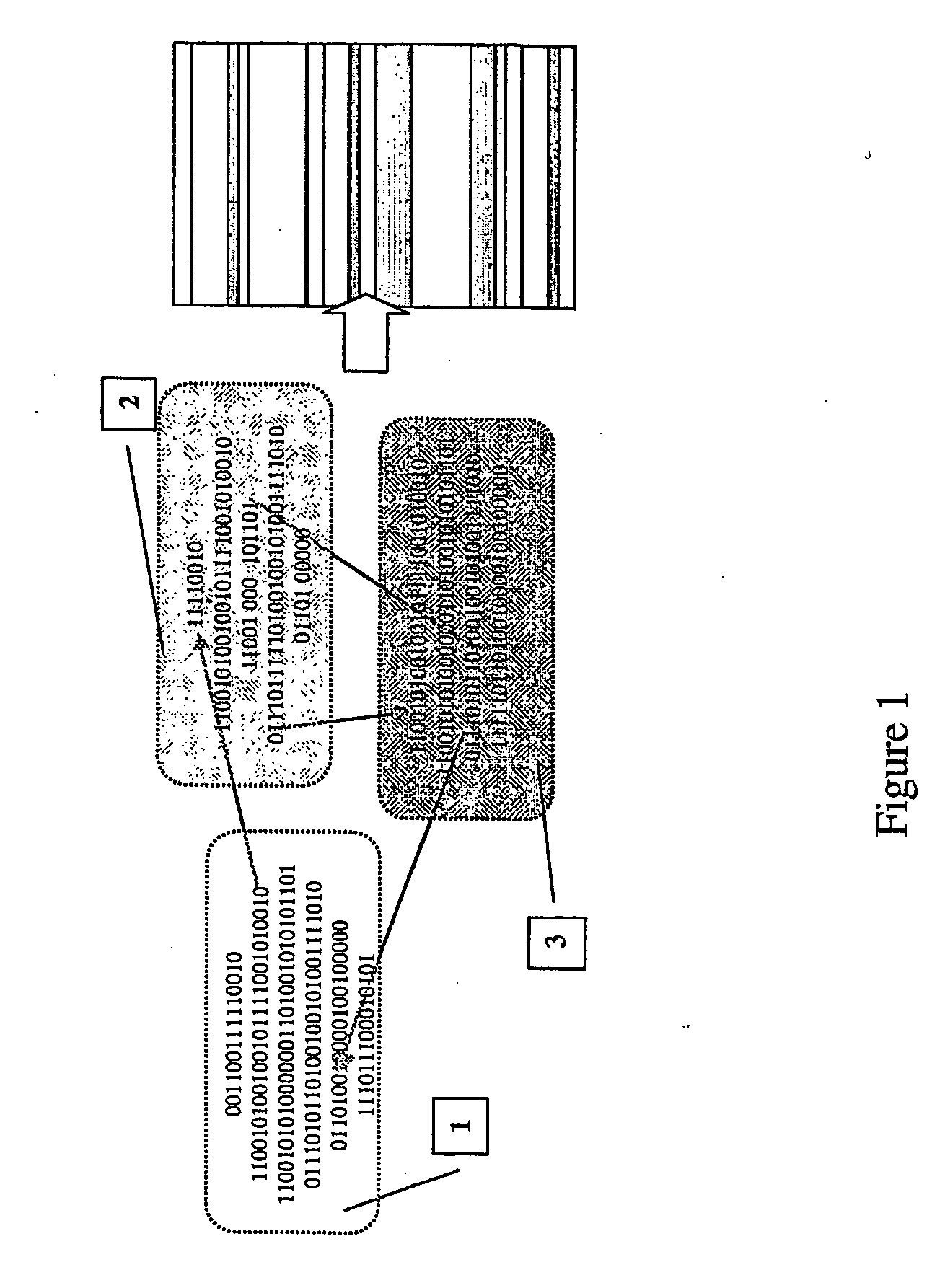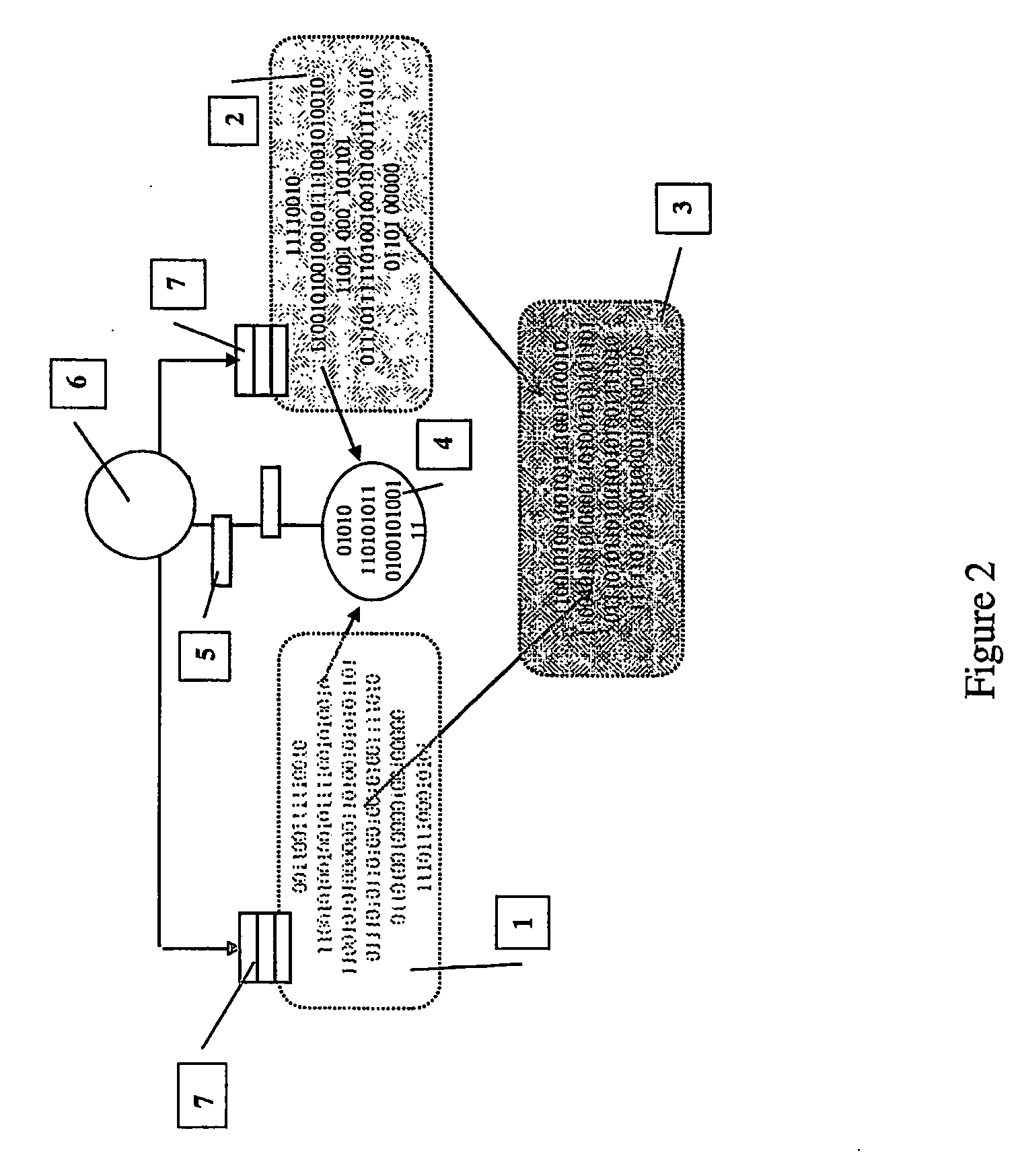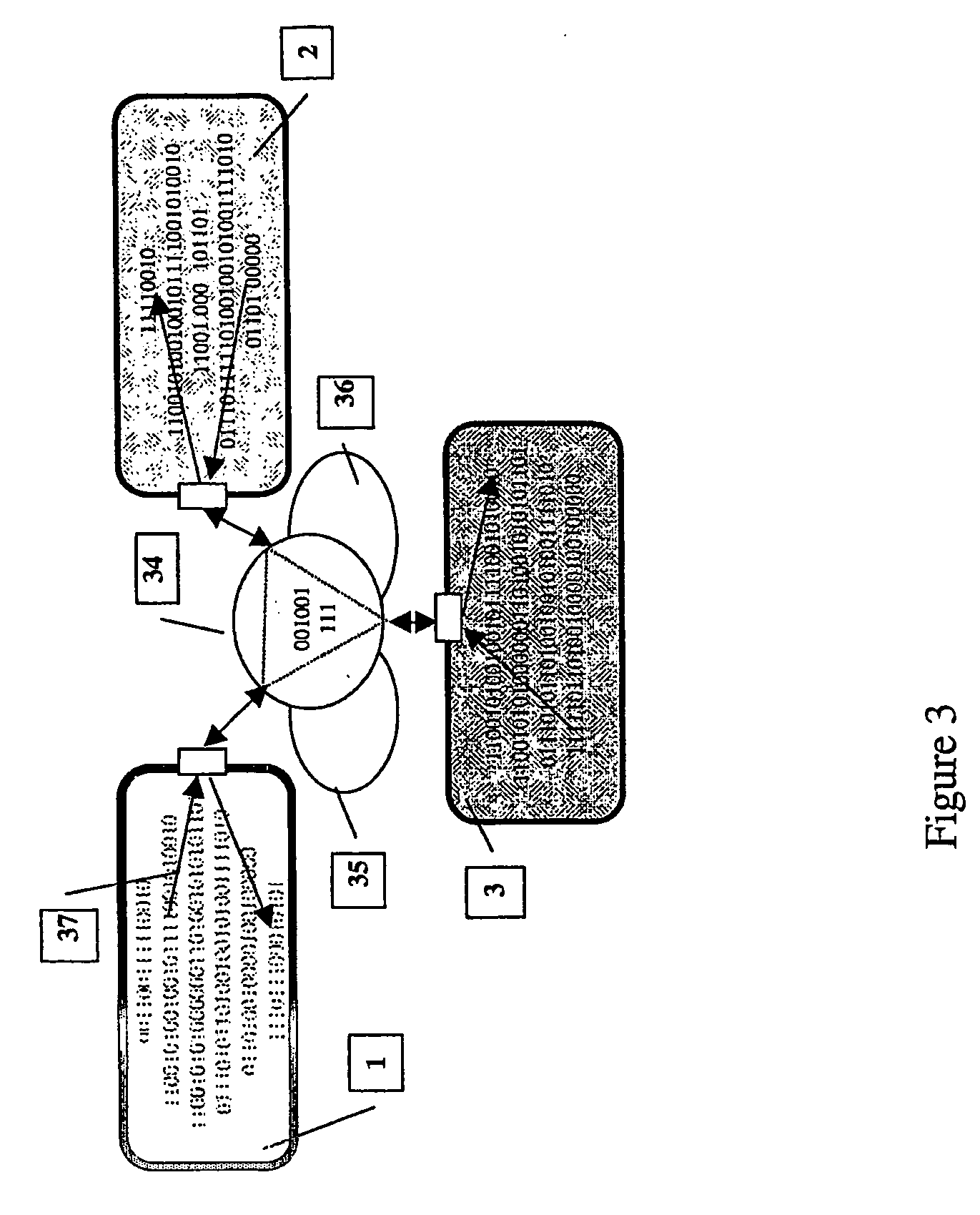Method of managing software components that are integrated into an embedded system
a technology of embedded systems and software components, applied in the field of managing components, can solve the problems of increasing the complexity of embedded systems such as portable telephones, cameras or navigation systems for automobiles, increasing the difficulty of managing, and limiting the advantage of the approach, so as to achieve effective systems in terms of resource and speed, increase the complexity of the system, and the difficulty of managing
- Summary
- Abstract
- Description
- Claims
- Application Information
AI Technical Summary
Benefits of technology
Problems solved by technology
Method used
Image
Examples
Embodiment Construction
[0052] According to the invention, illustrated in FIG. 3, the three codes 1, 2 and 3 can be managed in an entirely novel fashion, by virtue of the elements referenced in the figure: [0053]34: entity in charge of the switching and control of the various communications (PLUG) between the components [0054]35: database containing the information on the various components [0055]36: manager, in charge of the activation and deactivation of the various components [0056]37: procedural call redirected to the PLUG of the software engine.
[0057] With reference to this figure, the basic principle of the invention is as follows: [0058] a standard initial code (compilable in a self-contained fashion) is reworked automatically (pre-processing) so that all the uses of resources external to this initial code are replaced by: [0059] a redirection of the processor to a single entry per component, of a code called either the PROXY or the PLUG. The value of this single entity can be modified subsequently...
PUM
 Login to View More
Login to View More Abstract
Description
Claims
Application Information
 Login to View More
Login to View More - R&D
- Intellectual Property
- Life Sciences
- Materials
- Tech Scout
- Unparalleled Data Quality
- Higher Quality Content
- 60% Fewer Hallucinations
Browse by: Latest US Patents, China's latest patents, Technical Efficacy Thesaurus, Application Domain, Technology Topic, Popular Technical Reports.
© 2025 PatSnap. All rights reserved.Legal|Privacy policy|Modern Slavery Act Transparency Statement|Sitemap|About US| Contact US: help@patsnap.com



